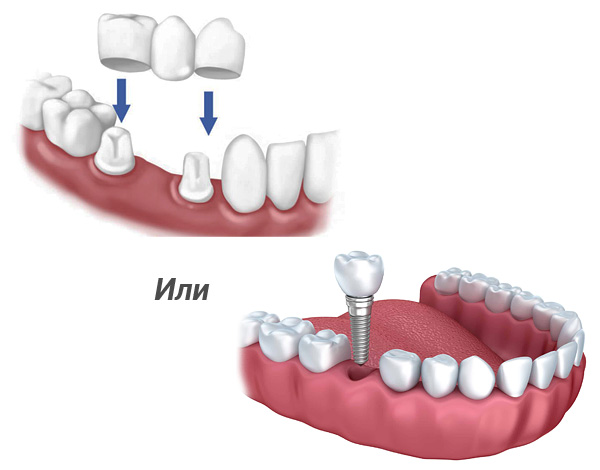
Until relatively recently (about 50 years ago), in the case of the extraction of one or several teeth, the majority of patients had only two practical options for solving the problem: either use a removable denture, or install the so-called dental bridge. However, today another option for dental prosthetics has appeared and is becoming more accessible for the general population - on dental implants.
On a note
By the way, the method is still not only expensive, but also surrounded by many myths, which is why many patients doubt whether it is safe at all install dental implants. Say, it’s necessary to drill a bone, and then screw a titanium screw into it, which then, an uneven hour, can still begin to be torn away ... Whether it is an old time-tested dental bridge.
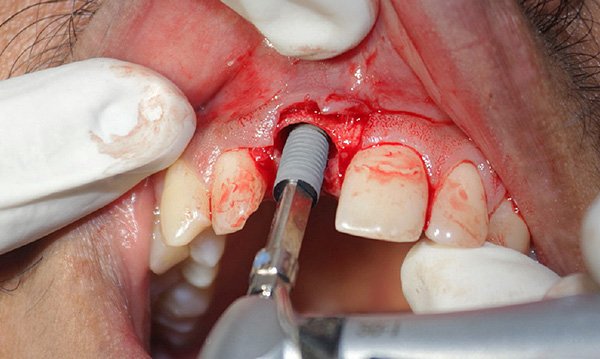
Well, then we will take a closer look at what is still better - the good old dental bridge, or the more expensive and modern dental prosthetics on implants. We’ll also talk about hidden and far from obvious advantages and disadvantages of both treatment methods, which are often simply kept silent in clinics ...
What are dental bridges and when are they used?
Dental bridges (otherwise, bridges) are fixed prostheses that consist of several interconnected dental crowns. They are used to replace one to 4-5 teeth in a row.
The photographs below show examples of dental bridges:
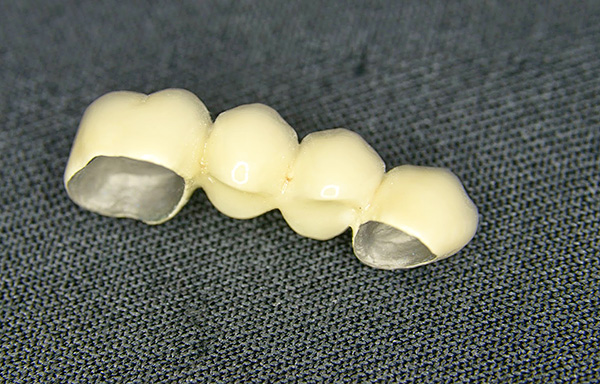
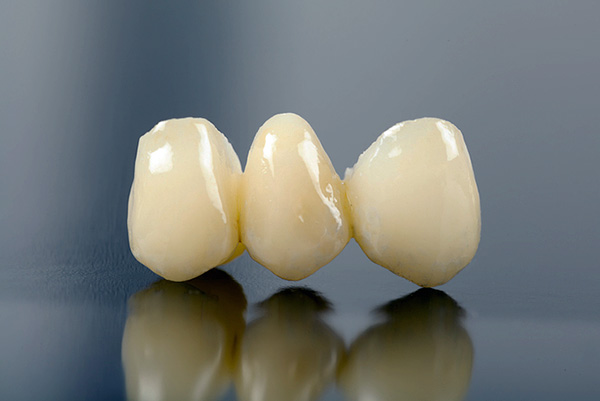
For fixing such prostheses, two supports are required - as a rule, these are the patient's own teeth. Accordingly, bridges cannot be used in case of end defects of the dentition (when the farthest teeth in the row are absent). And also there is no way to use such prostheses with full adentia (that is, in the case of a completely toothless jaw).
On a note
In addition, a contraindication to the installation of a dental bridge is the presence of an acute inflammatory process on the gums - periodontitis or periodontal disease. In this case, there is a great risk that the supporting teeth will loosen over time, and all the work will go down the drain.
It is customary to distinguish three types of dental bridges:
- classic dental bridge;
- adhesive bridge;
- bridge on implants.
The classic dental bridge has a solid metal base (the prosthesis is not divided into separate crowns), covered with a layer of ceramic or plastic (the outer layer allows you to repeat the color and anatomical shape of the teeth). With extreme crowns, the prosthesis rests on two supports - the patient’s own teeth. To fix the prosthesis, the abutment teeth are usually depulped (the “nerve” is removed) and sharpened - they are shaped like a cone, which allows you to put on and tighten the crowns of the dental bridge.
This is what a conventional bridge looks like to replace one lost tooth:
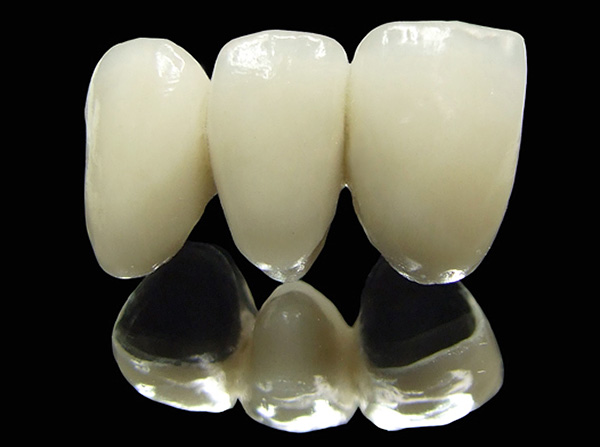
It is worth noting that tooth nerve removal - this in this case is an optional, but usually desirable process, because with pulp inflammation under the crown of the prosthesis, the entire structure will have to be completely removed, and the tooth should be treated. And it is not always easy to get the dental bridge back in place. Accordingly, this can reduce the life of the prosthesis (normally it can reach 10 years or more), because pulpitis can develop within a couple of years after prosthetics.
It is interesting
The base of the bridge is usually made of metal alloys - it can be an inexpensive alloy of nickel and chromium (in rare cases, it can cause allergic reactions from the gums), or a more expensive gold-containing alloy (a safe and hypoallergenic option).Metal is coated with plastic or ceramic - this allows you to achieve the necessary aesthetics.
The most expensive option is a bridge made of zirconia (instead of a metal base), covered with a thin layer of ceramic. The combination of these materials allows you to create the longest dentures - up to 5-7 crowns. Zirconia dental bridges are the most aesthetic designs that, if properly maintained, can last for decades.
The photograph below shows an example of a dental bridge made of zirconia:
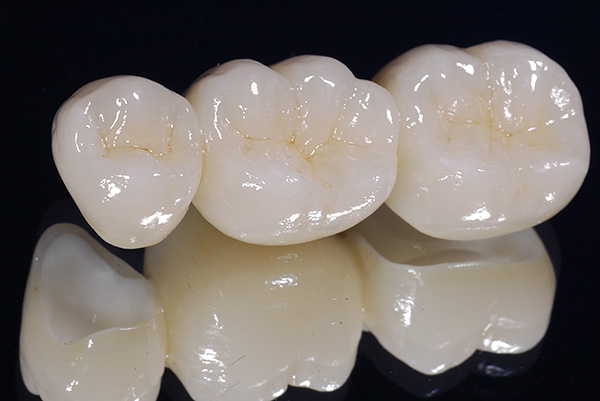
Concerning adhesive bridge - it is positioned as a temporary prosthesis (although many patients have been going with him for years and do not even think of exchanging for something else). For example, an adhesive bridge can be used for the period of engraftment of installed implants. Or if the patient categorically refuses to grind his teeth to install a traditional bridge.
The adhesive bridge of the front tooth looks like this:
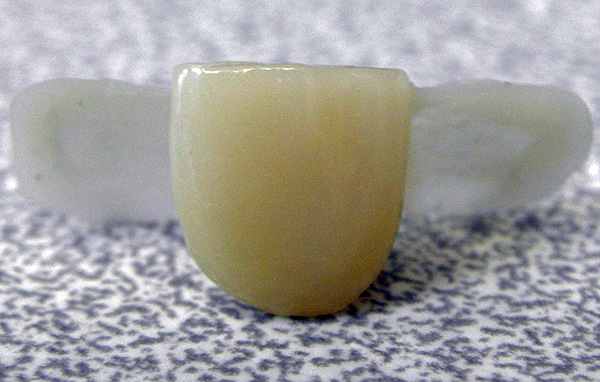
And here is an adhesive bridge to replace a chewing tooth:
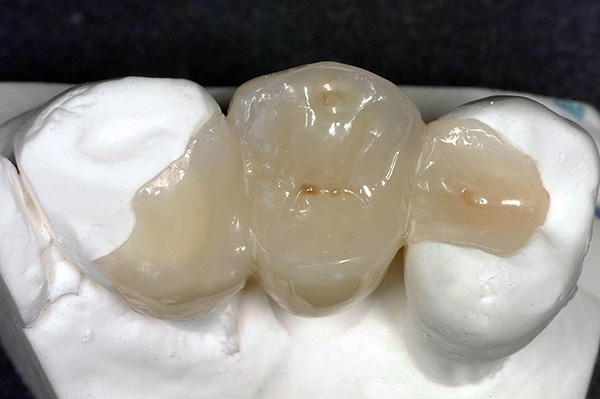
The essence of prosthetics in this case is that the crown simply adheres to two abutment teeth using thin plates. The advantage is that it allows you to save abutment teeth from significant turning. But this also implies a significant drawback of the design as a whole - the prosthesis cannot withstand heavy loads. That is why an adhesive prosthesis is recommended to be used only as a temporary option.
And finally, the third variety is a bridge on implants. As the name implies, this prosthesis is not mounted on the patient’s own teeth, but on artificial metal “roots” - implants that are pre-fixed in the bone tissue. The price of such prostheses (together with implants) can easily reach 100 thousand rubles, but the quality of the prosthetics is very high - both in terms of reliability, and in terms of functionality and aesthetics.
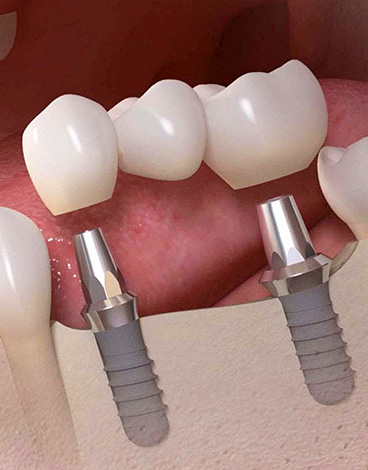
Further, speaking about the advantages and disadvantages of prosthetics using a dental bridge and implants and choosing the best option, we will focus on the usual, traditional type of bridge prosthesis, since it is the main one and is used in modern dentistry in 90% of all cases.
The advantages and disadvantages of bridges
The high popularity of the classic bridge (both among dentists and patients) becomes easily understandable if you look at the advantages that the use of this design gives.
Here are the main ones:
- affordable cost (especially when choosing a prosthesis made of base metal and plastic);
- minimum contraindications for health reasons;
- complete absence or extremely rare occurrence of complications;
- quick and painless addiction to the design, high wearing comfort;
- reduced treatment time - the manufacture and fixation of the bridge takes no more than a couple of weeks.
So it turns out that in practice, most clients of dental clinics today prefer classic dental bridges. That is, with the installation not on implants, but on their own teeth. In general, this is a quick, inexpensive, non-traumatic and painless method of prosthetics.
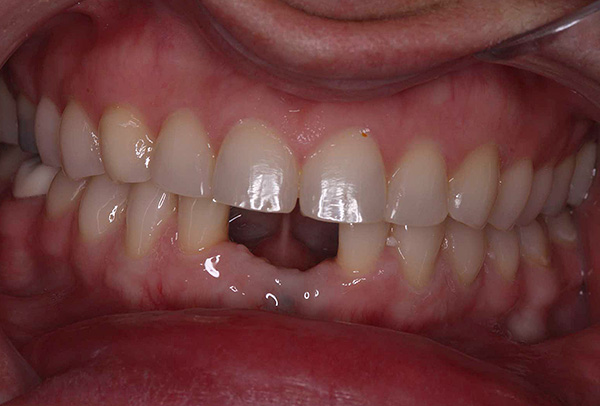
Here is a review of one of the patients about such a bridge:
“I have had a dental bridge for over 15 years. Recently, it was time to change to a new one, since the chewing tooth under the crown had to be removed, a cyst formed around its root. And again he set himself a dental bridge. Implants are too expensive. The main thing is to watch your teeth, although they are artificial, but also require attention. "
Dmitry, Chelyabinsk
However, the bridge also has disadvantages:
- With it, you can restore no more than 3-4 consecutive missing teeth;
- Not always a satisfactory aesthetics, especially when choosing dentures made of plastic;
- Often, the removal of supporting teeth is required, as well as their significant turning, because of which such teeth become weakened and often break under the prosthesis. If this happens, then the tooth has to be removed, and then again solve the problem of prosthetics (the old prosthesis will no longer be suitable);
- Lack of pressure on the jaw bone in the place of missing teeth - the bone tissue does not receive a chewing load, metabolic processes slow down here, and over time the bone atrophies. As a result, a gap is created between the gum and the prosthesis - a breeding ground for bacteria;
- Difficult hygiene. The dental bridge is a one-piece structure that is relatively tight to the gums, which causes plaque to accumulate under the prosthesis. It is difficult to remove it - you need to use brushes for hard-to-reach places, as well as irrigators;
- Allergic reactions are possible (to inexpensive metal alloys);
- The average service life is about 10-12 years (practice shows that bridges often fall out and begin to stagger - due to the gradual destruction of the supporting teeth).
However, in practice, the disadvantages of dental bridges do not often confuse patients. For many, the main thing is a small amount for treatment that you will have to pay at the moment, plus comfortable wearing of the prosthesis. Therefore, dental bridges are very popular.
It is useful to know in advance about the above-mentioned disadvantages of classical bridges, and if the financial side of the issue is not critical, then implant prosthetics should also be taken into account (see below).
Feedback:
“I had a metal-ceramic bridge for only three years. Then gum inflammation began. At the examination, the doctor was horrified and said that the prosthesis was barely holding and should be removed. The teeth under the prosthesis were diseased, had to be removed very quickly. Now in doubt - what to put, again a bridge or implants. The bridge disappointed me, only money wasted ... "
Irina, Moscow
Dental implantation: is it worth trusting the method?
In order to correctly assess the advantages and disadvantages of dental prosthetics on implants compared with those in the case of using the classical bridge, you must first have a good idea of how the implantation is performed and what problems it can be solved.
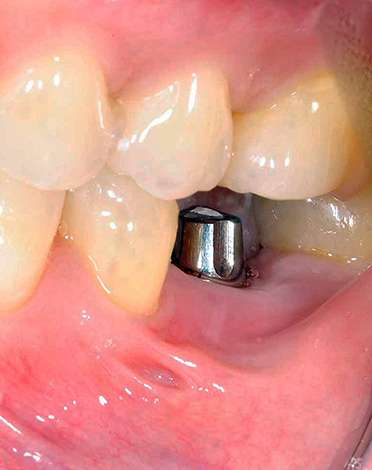
First of all, it is worth noting that dental implantation allows you to replace the lost tooth tissue in full - not only the crown part, but also the root. For comparison: dental bridges replace only the tip of the tooth (crown).
What does this give in practice? The restored tooth is fully functional - it’s not just a “hanging in the air” over the gum crown, but a full artificial tooth. It can withstand significant chewing (for a masticatory tooth) or cutting (for a cutter) load. This load is transmitted through the implant to the bone, so the bone tissue does not atrophy, as in the case of a bridge.
Implant prosthetics can be used in a wide variety of clinical cases, including those when the bridge cannot be installed. For example, in the absence of end teeth (the latest in the row) and with complete adentia. With single restorations, one implant is implanted into the bone tissue, a crown is fixed on it. For multiple restorations, several implants are required (with full adentia - from 4 to 8-10 for the entire jaw), on top of which the prosthesis is attached. See for example article about prosthetics technology for all teeth of the jaw: All-on-4 and All-on-6.
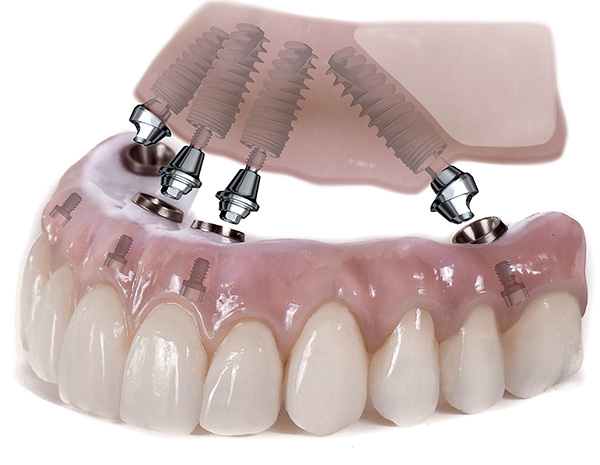
So speaking generally, dental implantation is a much more advanced prosthetics method than using a dental bridge.
It is interesting
In a number of European countries, as well as in the USA, the dentist risks losing his license if he prompts the patient to install a bridge instead of an implant.This also suggests that dental implantation is a safe technique that experts trust.
In contrast to the use of dental bridges, prosthetics on implants has a more impressive list of advantages:
- Average implant life - from 20 years or more;
- In case of breakage, dentures are easily updated to new ones, and crowns or bridges on implants themselves will serve at least 2 times longer than when fixed on live teeth;
- As noted above, a natural anatomical restoration of the tooth is ensured - not only its crown part, but also the root (as a result, the bone is protected from atrophy);
- No turning of live teeth is required;
- The highest esthetics is achieved, and much attention is paid not only to the appearance of the crown, but to the gingival margin - the artificial tooth either fits very tightly on the mucosa, or a small part of the artificial gum is created in the prosthesis that allows you to hide the flaws of the natural (this allows you to abandon the gingival plastic in the absence of a large number of teeth);

- Broad indications - you can restore both one tooth and the entire row;
- Wide possibilities of prosthetics - on the implants you can fix one crown, a dental bridge or a complete prosthesis;
- The absence of allergic reactions - there is no allergy to titanium, which is used in the manufacture of implants.
However, when patients think about which prosthetics option to give preference to implants or the classic bridge, they primarily turn to the disadvantages and disadvantages of both methods. It is worth noting that dental implantation, if you get a closer look at the technique of its implementation, often scares people and repels them - few people are happy with the prospect of drilling a bone and screwing a metal “bolt” into it.
But in practice, things are not as scary as they sometimes look in the pictures.
Feedback:
“I am 26 years old, removed the six, because the root cracked. I put an implant instead of a tooth. So, remove root It was much more painful and painful than putting an implant. But the result is incredibly pleasing, the tooth is like your own! ”
Ksenia, Syktyvkar
Here are the key disadvantages of dental implantation:
- A large list of contraindications - the installation of implants is not always possible due to the patient’s health status;
- Undesirable postoperative consequences are sometimes possible, up to implant rejection;
- Long treatment - prosthetics can take up to 1 year or more;
- Additional surgery may be required - bone growth, gum repair;
- Long preparation for treatment - diagnostics, oral rehabilitation, tooth extraction (if necessary), additional tests may be required to assess the state of health and eliminate contraindications to treatment;
- Rehabilitation after implant implantation surgery is required (swelling, bleeding, soreness, seam divergence are possible);

- High price. It is the financial side of the issue that scares away many patients.
Feedback:
“I'm very afraid of dental implants. I have a bad heredity - my father has been without teeth since he was 40, and now I myself haven't got three, the rest are just around the corner. But I still won’t dare to implant - there are too many negative reviews. I believe that the outcome depends almost 100% on the doctor, and it is very difficult to find a true professional. That's how the doctors learn to set up normally, and I’ll decide ... "
Irina A., St. Petersburg
See also article Complications and problems sometimes arising after dental implants.
Simply put, a dental bridge is quick and cheap, and prosthetics on implants is expensive, but it is as functional, aesthetic and durable as possible.
So what is still better - a bridge or implant?
Based on the foregoing, it may seem that dental implantation in all aspects is better than a bridge. High aesthetics, no need to grind live teeth, long life ...
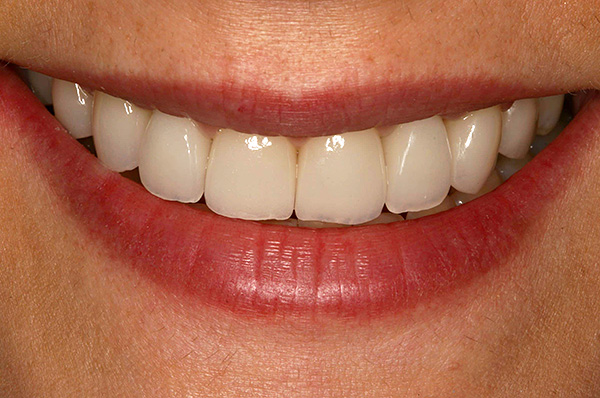
That is true, but in practice it is always necessary to take into account the individual characteristics of the patient and the specifics of each particular clinical case. And it so happens that a bridge may be a better solution than installing an implant.
Dental bridges are recommended for installation in the following cases:
- With limited financial capabilities of the patient (prosthetics on implants can cost several times more);
- If there are health problems that are a contraindication to the installation of implants (oncology, diabetes). It is important to understand that a deterioration in the condition of the body can provoke rejection of implants.
But here are situations when you will have to refuse to install a bridge (either generally or temporarily - until the problem is fixed):
- If there is acute inflammation of the gums and tooth mobility (otherwise the supporting teeth will loosen and they will have to be removed);
- If more than 4 teeth are missing in a row;
- If there is no last tooth in the row (or several), the prosthesis will have nothing to lean on.
Be that as it may, the doctor should first of all help determine the optimal prosthetics option. Often, the patient's ideas about the state of his dentofacial system and the prospects of prosthetics are very far from the real state of affairs, and the very first consultation with a doctor makes serious adjustments to plans already planned by the patient in such cases.
If you have personal experience with dental prosthetics using a bridge or implants, be sure to share your experience by leaving your review at the bottom of this page.
Very high quality explanation regarding the choice between implant and dental bridge
Bridge Installation Example

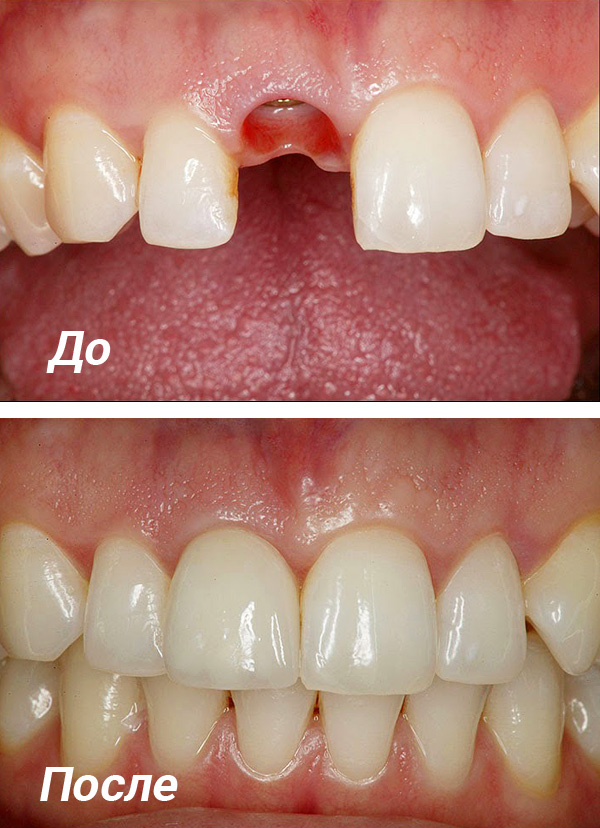
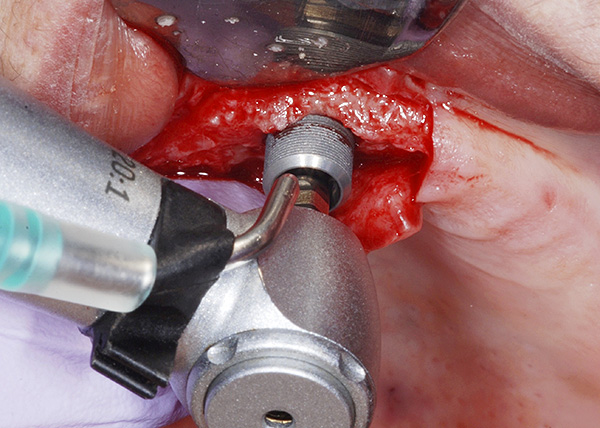
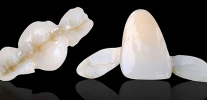
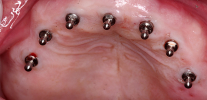
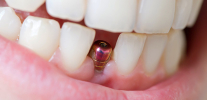
Hello. It is planned to install a bridge made of cermet, 3 tooth sharpened, teeth 4 to 7 missing, 8 available. The doctor offers me to put one implant and after that to install a bridge, using 3 and 8 teeth. Interested in your opinion, will the bridge be reliable? In general, is it possible to install a bridge on implants and your teeth at the same time? Thanks in advance.
Hello, Hope. The combination of their teeth and implants in a single design in the vast majority of cases is unacceptable. Especially if there are fewer implants than your teeth. This is due to the fact that their teeth have a certain physiological mobility, while the implant, on the contrary, is tightly fused with the bone and should not have mobility. Accordingly, by combining the implant and your tooth, we risk losing the stability of the implant.